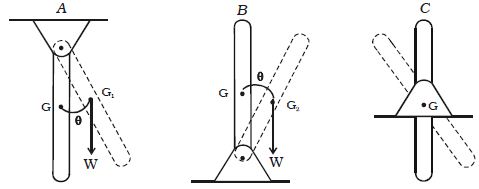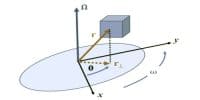There are three types of equilibrium of bodies. They are:
(a) Stable equilibrium
(b) Unstable equilibrium
(c) Neutral equilibrium
Consider three uniform bars shown in Fig. a, b, c. Suppose each bar is slightly displaced from its position of equilibrium and then released.
For bar A. fixed at its top end, its centre of gravity G rises to GI on being displaced, then the bar returns back to its original position on being released, so that the equilibrium is stable.

(a) Stable equilibrium (b) Unstable equilibrium (c) Neutral equilibrium
Fig: Types of equilibrium
For bar B, whose fixed end is at its bottom, its centre of gravity G is lowered to G2 on being displaced, then the bar B will keep moving away from its original position on being released, and the equilibrium is said to be unstable.
For bar C. whose fixed point is about its centre of gravity, the centre of gravity remains at the same height on being displaced, the bar will remain in its new position, on being released, and the equilibrium is said to be neutral.













